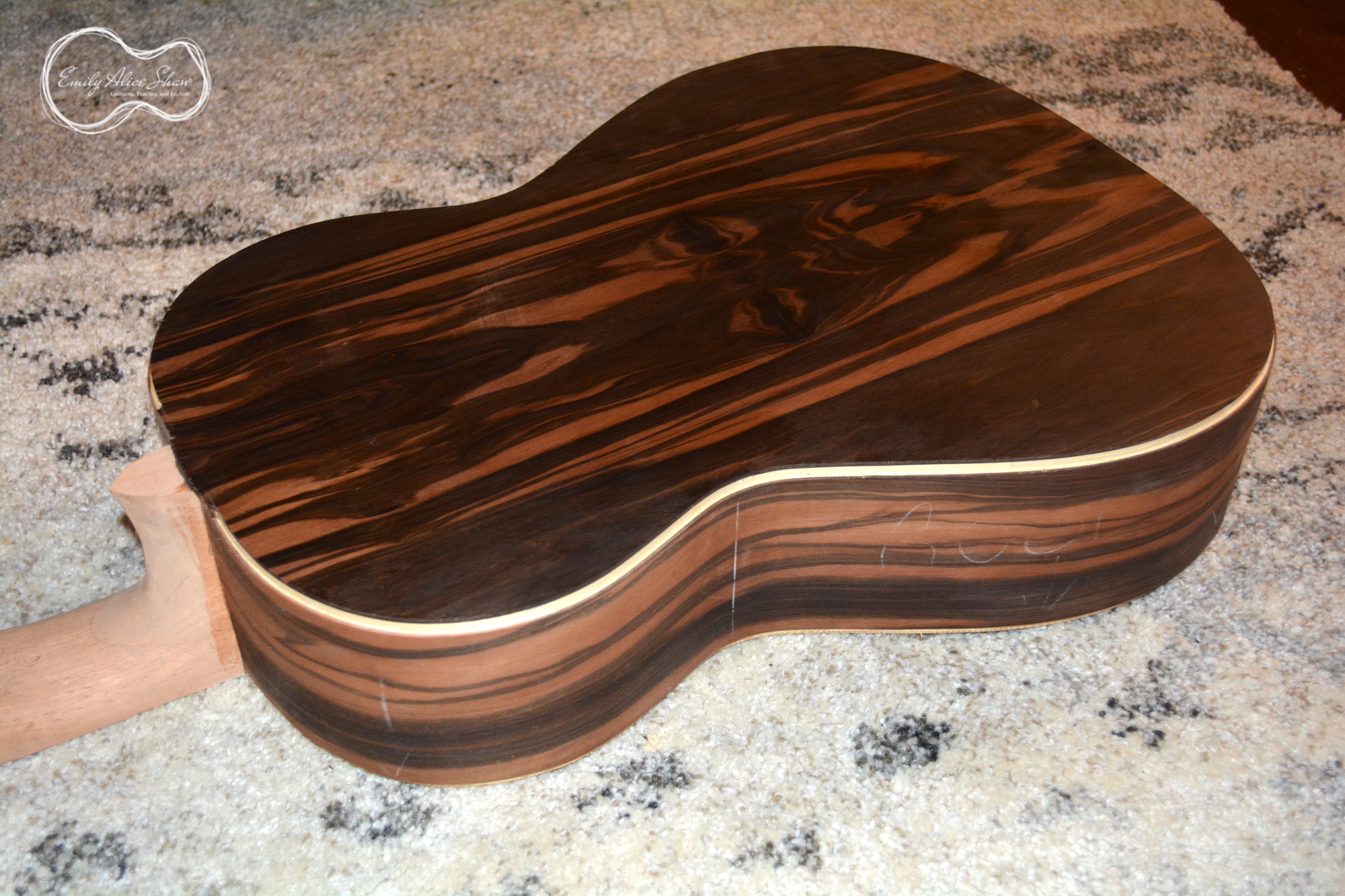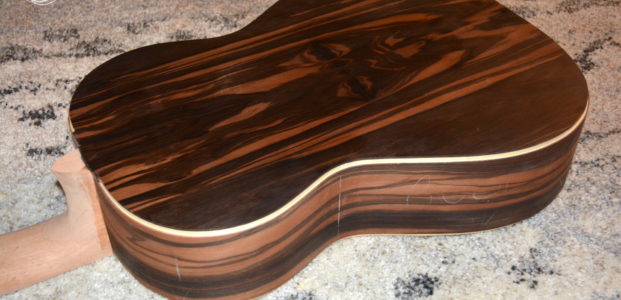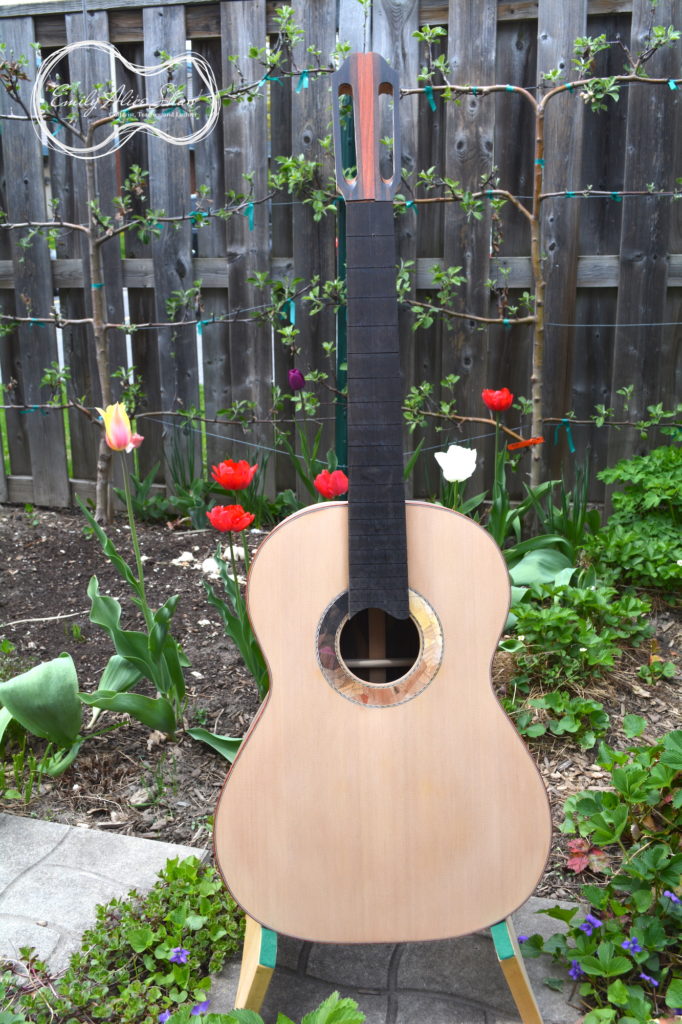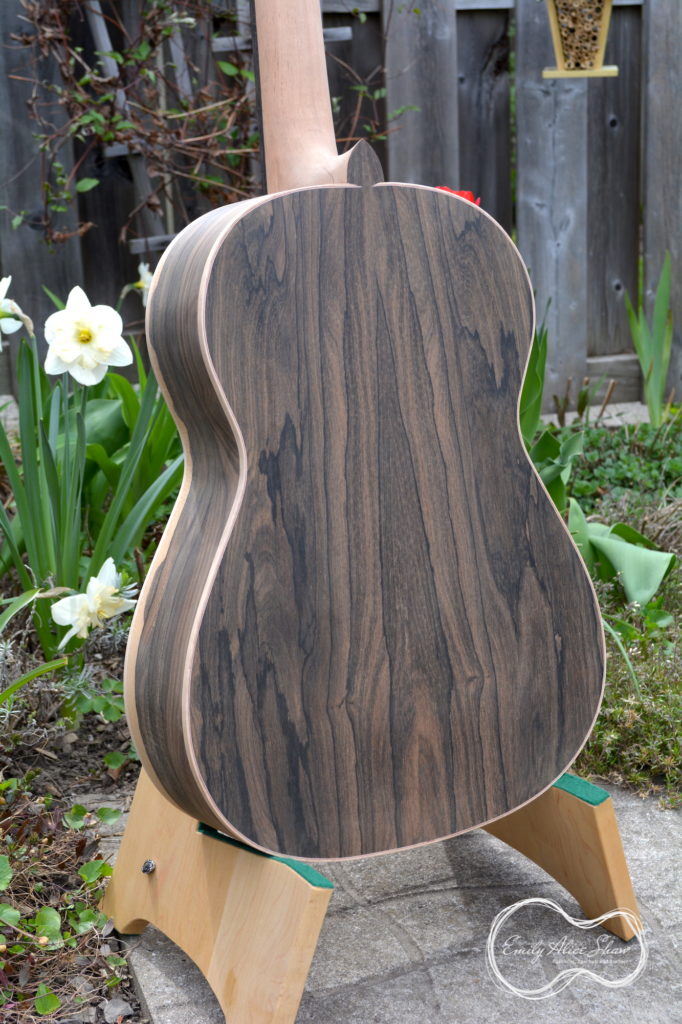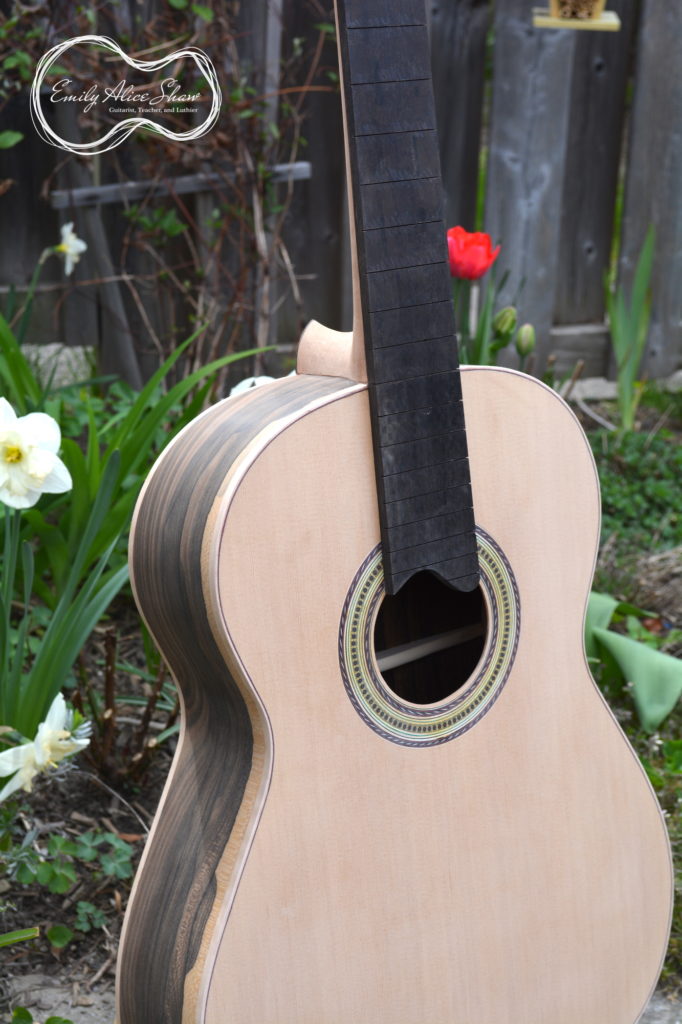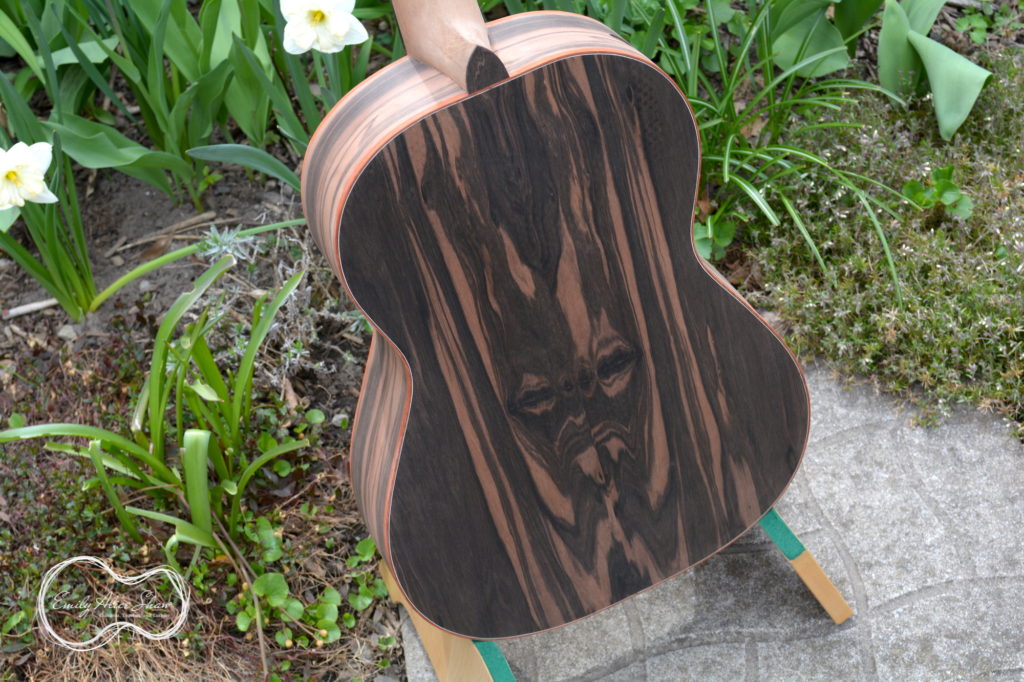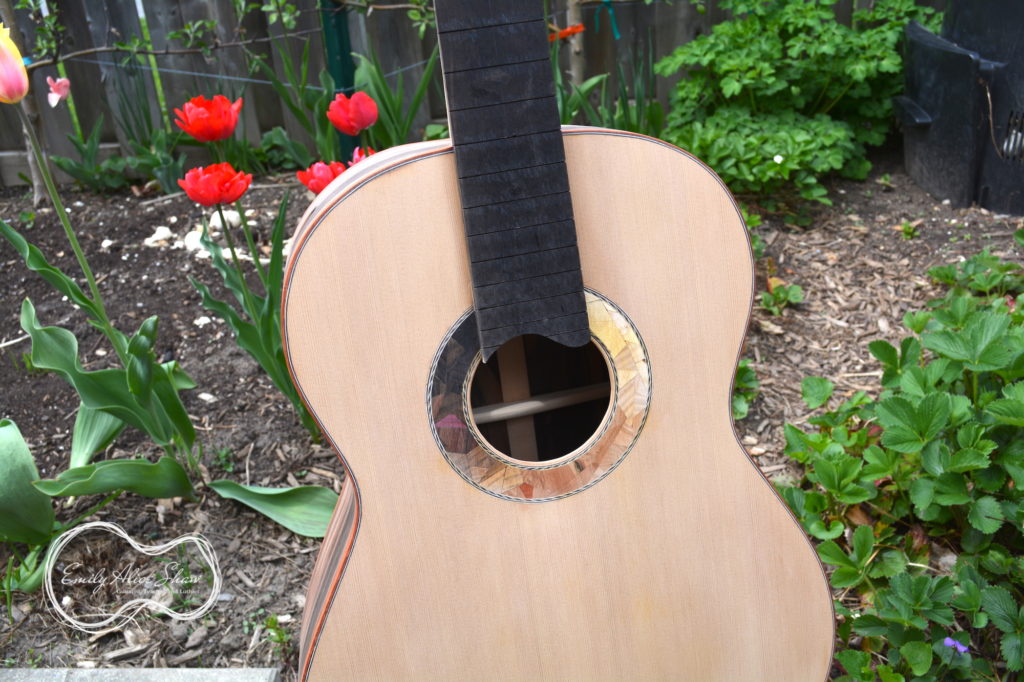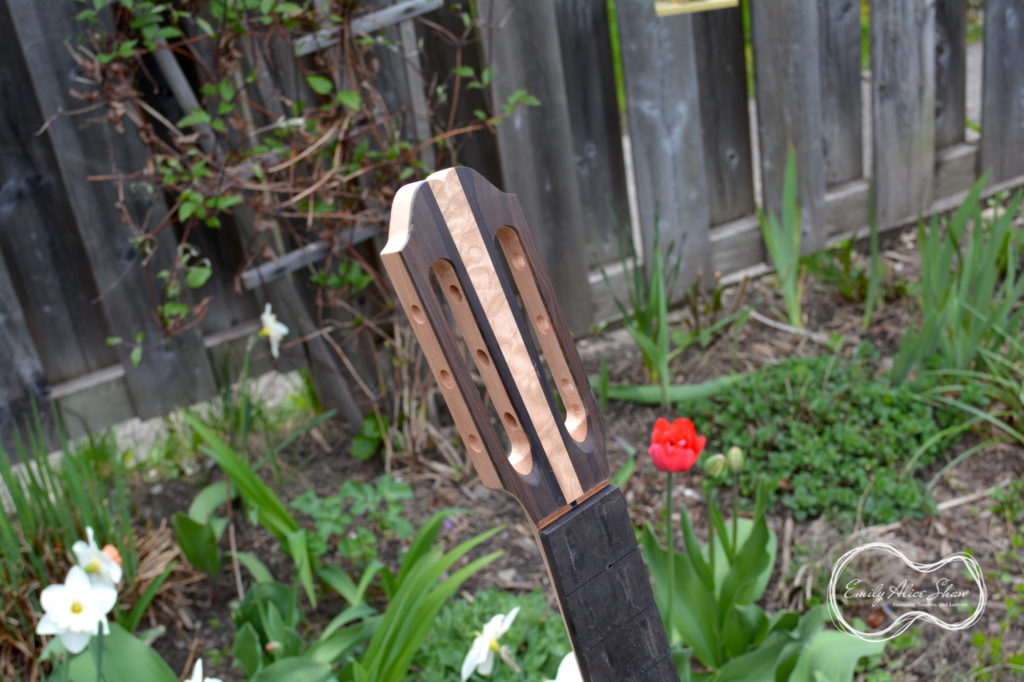The last time I wrote about the guitars that I am working on was back in March when I just just finished inlaying the rosettes. A lot has happened since then, and now the guitars look like guitars! In fact, I am just about ready to apply finish to the bodies of these instruments. I am just waiting on one product from Lee Valley, but it should come any day. And of course, I probably have another day’s worth of sanding to do before I can really build up a polish.
My plan is to blog the next guitar build more thoroughly, so if you are hoping to see more technical guitar building information in these posts, that is coming (a ukulele build and a Baroque guitar are also in the early planning stages for upcoming blog post series). Today I just have a few pictures from when I remembered to have my camera around.
I am currently building two similar classical guitar commissions. Both have latticed-braced cedar tops (I have heard that lattice bracing works really well on cedar, so am testing it out). The back of one guitar (No. 024) is Ziricote, and the back of the other (No. 026) is Ebony. 024 has a full 650mm scale length while 026 has a shorter 630mm scale length. Here is what the bracing looks like on the inside of 026 (which is pretty much the same as 024):
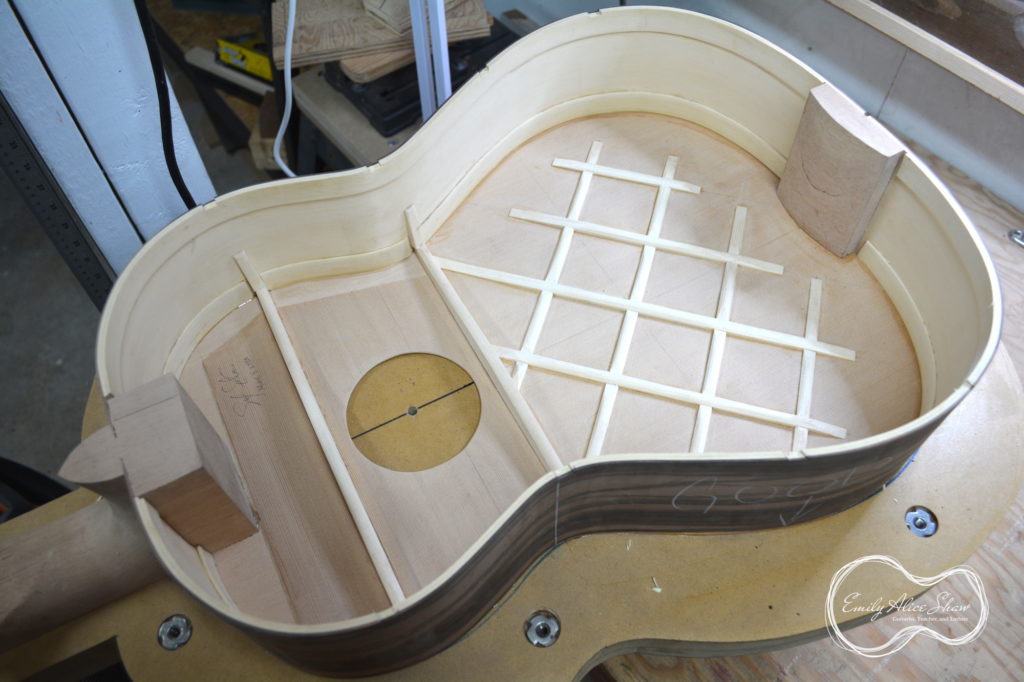
As you can see, I laminated the ebony sides with Alaskan yellow cedar, which I have done for the past several classical builds. I really like the stability that it adds to the ribs. I used leftover strips of the cedar for the linings. On the soundboard, the braces are all Engelmann spruce, and there are two sizeable reinforcing patches—one across the upper bout, and one around the soundhole. I used this pattern on the Padauk and Spruce guitar (023) that I built last year, and it turned out quite well, so I thought that I would try it again. I did make the lattice braces slightly more hefty on these cedar tops, partially because of the lightness of cedar, and partially because I know how these two clients play.
A note about glue
I’ve been discovering a lot of things about glue over the past few instruments, and I think that it has made a huge difference in my builds. I used to use carpenter’s glue (PVA) for everything, but now I have a whole shelf full of options. I have started to use fish glue for some of the joints in these instruments. I used fish glue to attach the ribs to the soundboard, and the back to the ribs, and most recently to attach the fingerboard to the neck. These are all joints that might need to be separated later on in the life of the instrument for repairs, and fish glue allows for this more easily than regular carpenter’s glue. I plan to use fish glue or hot hide glue for the bridge as well for the same reason. I also used fish glue for the bindings/purflings because it has a really long open time. It is a very sticky glue, but you can manipulate it for about half an hour, and that is important in binding work, or at least it is for me! For joints that shouldn’t ever need to separate (for example, the stacked heel block, laminated sides, and the head joint), I have continued to use regular PVA. As I have mentioned in other posts, I used a polyurethane glue for the rosette tiles, and that was life changing. It acts so differently to other glues and seems to hold the tiny strips of wood together more tightly than the PVA that I was using before.
The headpieces for these two guitars are very similar to each other (and to guitar 023). Simple in design with just two woods and no stripes or fancyness. I think I was craving simplicity after the ornate designs of guitar 025.
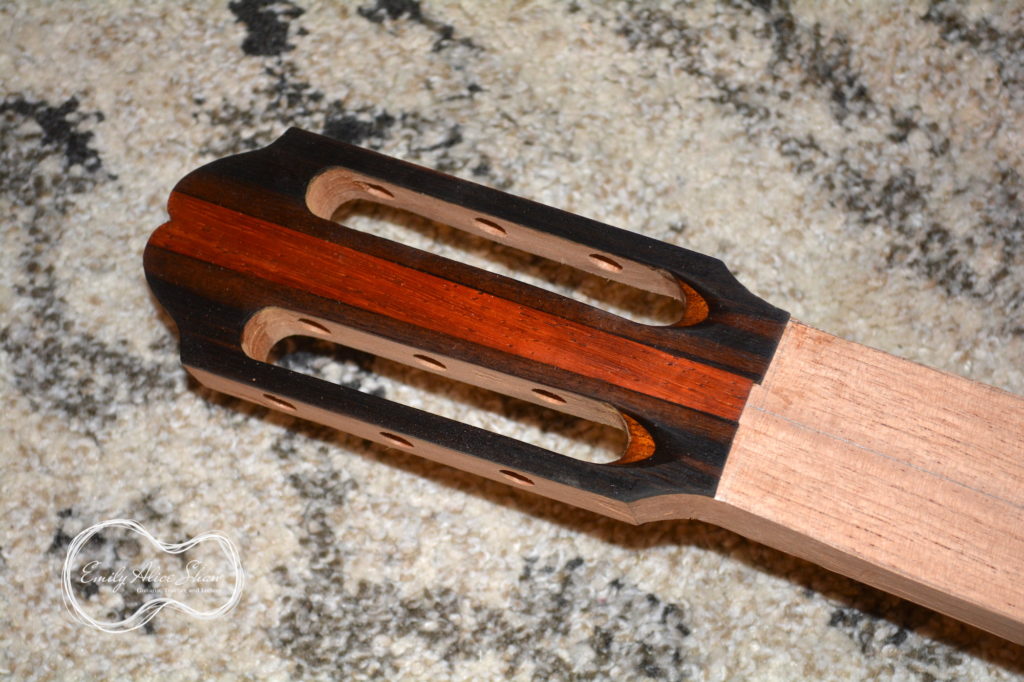
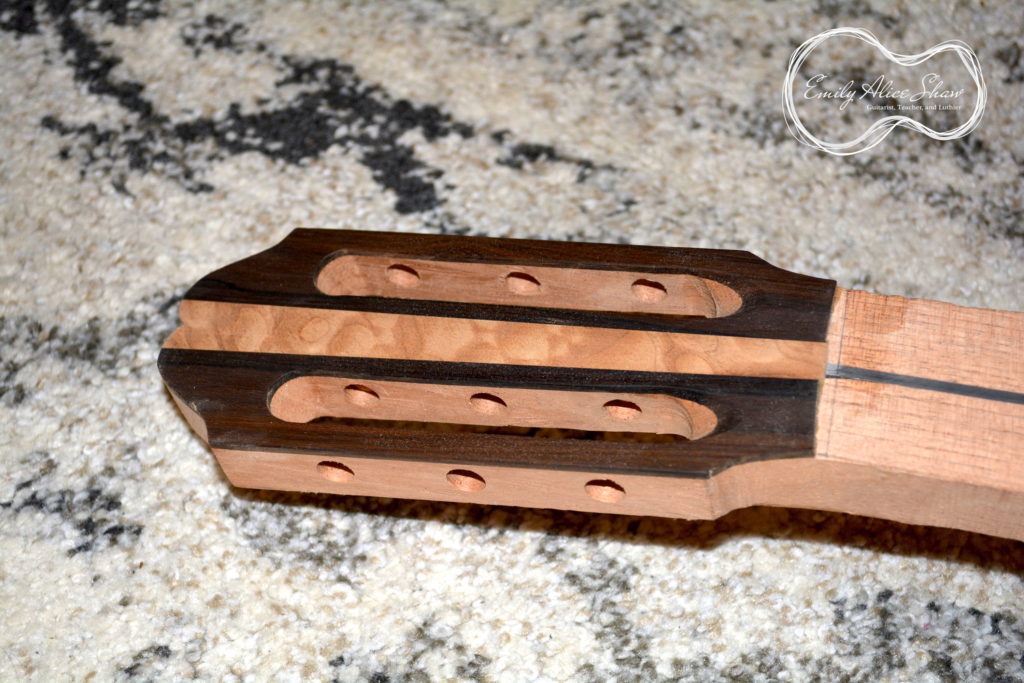
I used my router set up that I had made for guitar 025 earlier this year, and it worked really nicely to cut the binding channels around both of these guitars.
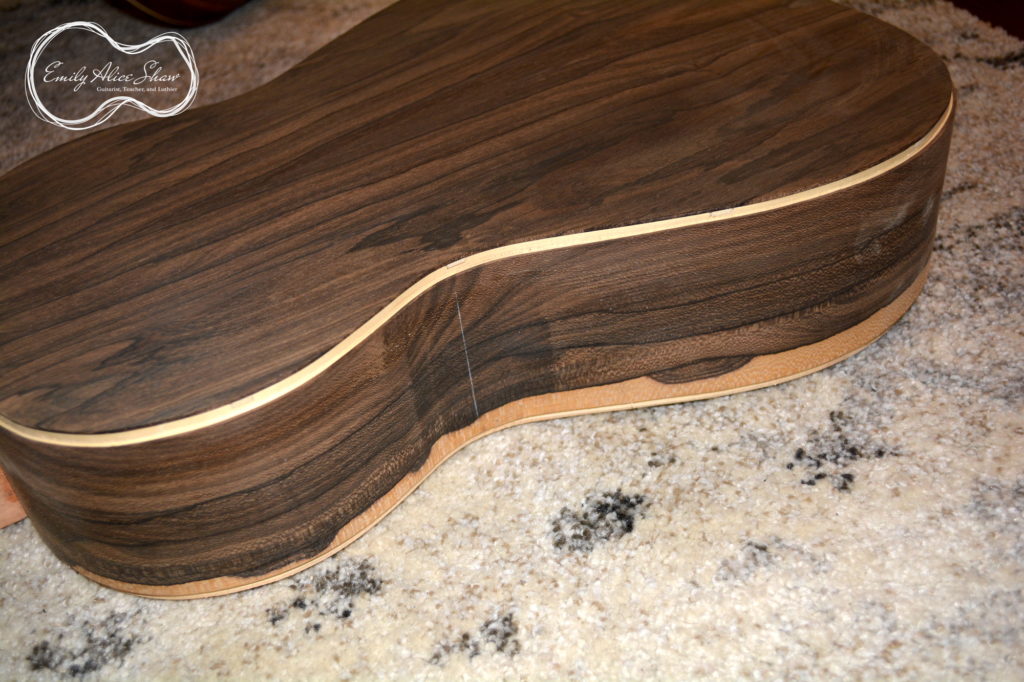
Again, I was craving simplicity in these instruments after the ornate 025, so I did not add any fancy stripes on the sides, and kept the purflings on the soundboard and back to a minimum. I used padauk on the ebony guitar (026) and quilted maple on the ziricote guitar (024). These are the same woods that I used on the headpiece, and I think that they are quite successful. Here are a few pictures of the guitars before applying finish:
And yes, I see the face on 026 as well.
